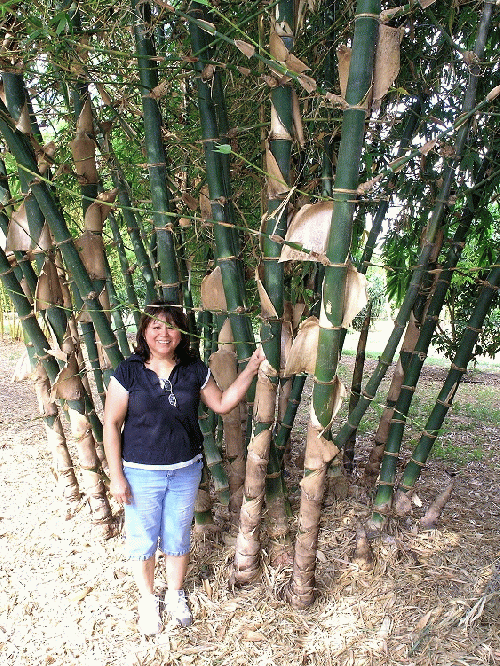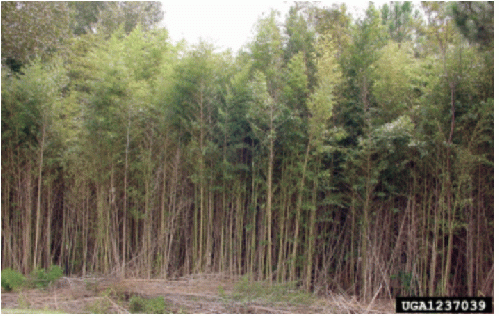| Back OpEd News | |||||||
|
Original Content at https://www.opednews.com/articles/Making-War-on-Climate-Chan-by-Jerry-Lobdill-Apathy_Biomass_Change_Climate-190206-62.html (Note: You can view every article as one long page if you sign up as an Advocate Member, or higher). |
|||||||
February 6, 2019
Making War on Climate Change
By Jerry Lobdill
If you are tired of all the "Ain't it awful?" articles about climate change and want to do something useful to make war on climate change, this article recommends a project that could make all the difference. You CAN help us win this war.
::::::::
We are bombarded daily with dystopian forecasts of climate disaster looming in the very near future. Each article pounds one or more nails into our collective coffins. The hammering is endless, and is very effective in conveying the message that there is no alternative and no hope. This serves the fossil fuel industry and the rest of the corporate world. Their thinking is limited to whatever will maximize quarterly profits.
Thankfully, there is another effort afoot. It is a science-based effort whose goal is to develop a plan to reverse global warming and provide a roadmap to accomplish it. The plan is revealed in a 2017 book, DRAWDOWN, a NYT bestseller. Quoting from the Foreword, by Dr. Jonathan Foley, Executive Director, California Academy of Sciences, San Francisco:
""climate change threatens to undermine our social fabric and the foundations of democracy. We see the impacts of this in the United States in particular, where key parts of the federal government are denying the science and are closely aligned with fossil fuel industries. While most people continue to move through their day as if nothing is wrong, others who are aware of the science are fearful, if not in despair. The climate change narrative has become a doom and gloom story, causing people to experience denial, anger, or resignation."
And,
""DRAWDOWN illuminates ways we can overcome the fear, confusion, and apathy surrounding climate change, and take action as individuals, neighborhoods, towns and cities, states, provinces"[etc.]"
And finally,
""DRAWDOWN has helped restore my faith in the future and in the capacity of human beings to solve incredible challenges. We have all the tools we need to combat climate change, and thanks to Paul [Paul Hawken, editor] and his colleagues we now have a plan showing us how to use them.
Now let's get to work and do it."
For several months now I have been thinking about bamboo, the number 35 ranked solution of the 80 solutions discussed in DRAWDOWN. I began this thought process before I was aware of the book and experienced a surprising surge of hope as a result. I've been collaborating with OpEdNews.com friends about how to spread the word and generate support for bamboo as one part of the solution to our problem. This article is the first step.
There are more than 1200 varieties of bamboo. Some are nuisances like Golden Bamboo, (Figure 1) the common cane variety found in the US (Distribution: AL, AR, CT, DE, FL, GA, HI, KY, LA, MD, MS, NC, OR, SC, TN, TX, VA, WV). It propagates from underground runners that sprout new growth from rhizomes and take over large areas rapidly.
Figure 1 Golden bamboo (Phyllostachys aurea)
The most interesting varieties have culm (stem) diameters of several inches and grow in clumps that do not spread beyond a limited radius of a few yards. (Figure 2) They sprout new culms from rhizomes attached to the root of an existing culm. (See Figure 3) The new sprouts grow at as much as 1+ meters per day. (Example: Figure 4) They are the fastest growing plants on Earth, reaching heights of 30 ft or more in a year. The diameter of the culms can be as much as 10 inches depending on the variety. The thickness of the culm wall depends on the variety.
Figure 2 Bambusa Vulgaris, a clumping bamboo variety

A Bambusa Balcooa clump (not Beema) at Rivers End Nursery, Bayview, TX, 2008
(Image by Rivers End Nursery, Bayview, TX) Details DMCA
Figure 3 A Bambusa Balcooa clump (not Beema) at Rivers End Nursery, Bayview, TX, 2008 (Notice two new sprouts on the right edge of the clump.)
Figure 4 Giant Bamboo Shoot
Some varieties propagate by flowering and producing seeds. These varieties live from 40 to 80 years before flowering and then dying. A high density, non-flowering, sterile, clumping variety of Bambusa Balcooa, called "Beema", (Click here) has been developed in India through tissue culture methods. The clump has solid core culms and grows 8 to 10 new shoots per year. Mature culms (three or more years old) are harvested each year and sold to make more than 20 commercial products. In a plantation each Beema clump is said to capture about 400 kg of CO2 per year.
The world average annual per capita CO2 emission rate was 5000 kg in 2014. So 12.5 Beema clumps would have made one average person carbon neutral in 2014. Our CO2 emission rate in the US for 2014 was about 16,490 kg per person, more than 3 times the world average.
These are daunting statistics. According to DRAWDOWN, it will be necessary to solve socio-political-economic international problems before sufficient cooperation to obtain the CO2 reduction available with carbon sequestration methods will be possible. This article limits discussion to the possible benefit of the unimpeded use of bamboo.
Consider plantations of bamboo. Such plantations would be located in tropical environments. They do not require prime agricultural land. They can be grown on deforested Amazon rainforest land or any other available land. Allowing access lanes for cultivation and harvesting, and, allotting each clump a 15 ft. diameter circle, a density of 124 clumps per acre is possible. Such plantations would be operated and maintained by locally employed labor whose families live on the property and have access to a school, stores, gardening areas, and medical care. Ecoplanet (click here) has pioneered this type of operation. Each acre would produce about 991.4 culms annually, sequestering a total of 49570 kg (54.8 US tons) of CO2 each year, thus neutralizing the yearly carbon footprint of 10 world average humans.
What about biodiversity? Beema bamboo improves the potential value of Bambusa Balcooa in plantations without genetic modification. The plants have been cultured to be sterile so that clumps do not flower and die, and the core has been made solid so that the clumps in plantations never have to be replaced, and the culms have maximum biomass. There is no danger of loss of biodiversity due to invasiveness.
Tissue culture is not a complicating factor. Dr. Bharathi Nambi, the agricultural scientist who developed Beema, produces and sells 10 million tissue cultured plantlets each year. This can be done in each country where bamboo plantations are located. For example, in the Amazon basin the rainforest has been under siege by clearcutting and converting the land to cattle ranches. In the last 10 years a yearly average of 1,825,567 acres were deforested. A bamboo plantation that size would neutralize the annual CO2 emissions of 18,255,670 world average humans.
There is a ready market for bamboo now. It will grow as plantations proliferate. Today there are commercially viable bamboo plantations in Africa, China, India, and America. See the Ecoplanet website for more information.
So"there is no doubt that bamboo can be used to make a serious dent in the concentration of CO2 in our atmosphere. We must get to work and do it, as Dr. Jonathan Foley has recommended in the quotation above.
What can we do to help? We can spread the word and put pressure on the government and the UN to solve the socio-political-economic-diplomatic problems a tall order, but it must be done.
How can we make a big splash? Would you be willing to invest about $35 to attract attention to this? Here's an idea. We can each plant a clump of an available close relative of Beema if we can find a 15 sq ft plot for it, and then call attention to it and distribute information to as many people as we can. The bamboo can grow in USDA Planting Zones 8b and 9a in the US. See (Click here) to look up your zone. If you don't live in an appropriate zone, you may have a friend who does. You can buy a plantlet and have it shipped anywhere in the US for about $35.
We have identified an appropriate variety, Bambusa Ventricosa Clone X, available at (Click here).
We need a way to communicate with others join this effort. Maybe a blog or a website (?). Ideas?
Authors Website: http://www.LastTrain2ElPaso.com
Authors Bio:
I am a retired physicist and hold a B.S. in Ch. E. as well. I have been an environmental activist since the early 1970s. I was a founding member of the Save Barton Creek Association in Austin, TX. In 2006 I was a member of a select committee of the Philmont Staff Association to advise Philmont Scout Ranch about opposing El Paso Natutal Gas's plan to drill and frack in the Valle Vidal in Carson National Forest. I studied the technology of horizontal gas drilling and the environmental effects associated with it. We defeated the plan proposed by El Paso Natural Gas. have been an active opponent of urban gas drilling in Fort Worth, TX since 2006. My present focus is global warming and the ominous effect of increasing atmospheric CO2.
I have been a writer of opinion pieces and other essays since about 1995 and am a published author of history of the old west. My book, Last Train To El Paso--the Mysterious Unsolved Murder of a Cattle Baron was published in 2014. I have had two articles published in Wild West magazine,. The most recent one, titled "How Jim Miller Killed Pat Garrett" was the lead article in the August 2018 issue.
I have studied monetary systems since 1968.
I am an owner of a home with mineral rights in Fort Worth, Texas. I am politically a progressive.


